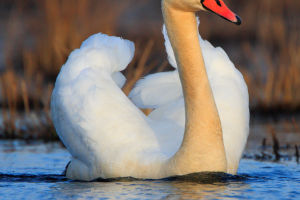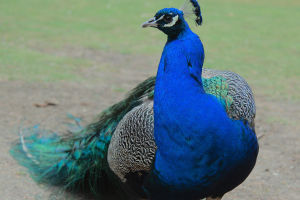Giraffes are the tallest mammals on Earth, known for their long necks and legs. They are members of the giraffe family, which includes the giraffe and its closest relative, the okapi. Native to Africa, giraffes can be found in savannas, grasslands, and open woodlands.
Giraffes are herbivores, eating mainly the leaves, flowers, and fruit of trees and shrubs. They use their long necks to reach tall branches that other herbivores cannot reach. They also have a graspable tongue over 18 inches long, which they use to grab leaves and pull them into their mouths.
Giraffes are pack animals and can form groups of up to 32 individuals, although they tend to form smaller groups of 10-12 individuals. They communicate with each other using a variety of sounds and gestures, such as rubbing each other's necks and snorting.
Unfortunately, giraffes are facing threats from habitat loss and poaching for their meat, skin, and bones. As such, all giraffe species are considered vulnerable or endangered, according to the International Union for Conservation of Nature (IUCN). Conservation efforts are underway to protect the giraffe population and its habitat.
There are four species of giraffes found in different parts of Africa:
Giraffa camelopardalis: This species is found in several countries in North Africa, including Chad, Cameroon, and the Central African Republic. There are several subspecies of the northern giraffe, including the Nubian giraffe, the West African giraffe, and the Kordofan giraffe. Northern giraffes have lighter coats and more irregular patterns than other species.
Giraffa giraffa: This species is found in several countries in southern Africa, including South Africa, Botswana, and Zimbabwe. There are two subspecies of the southern giraffe, the Angolan giraffe and the South African giraffe. Southern giraffes have large, irregular patches of fur.
Giraffa tippelskirchi: This species is found in Kenya and Tanzania and is also known as the Kilimanjaro giraffe. Masai giraffes have a distinctive coat pattern with irregular, jagged-edged patches that are more defined than those of southern giraffes.
Giraffa reticulata: This species is found in Kenya, Somalia, and Ethiopia. It is known for its distinctive coat pattern consisting of large polygonal patches separated by white lines. The reticulated giraffe is taller than other species, with a narrower face and longer neck.
Each type of giraffe has its own unique features and fur patterns, adapted to its particular environment. While they may share some similarities, different species of giraffes are distinct from each other and play important roles in their ecosystems.
Here are some interesting facts about giraffes:
1. The giraffe is the tallest mammal on Earth. They can grow up to 18 feet tall, with their necks accounting for more than half their height.
2. Despite their height, giraffes have the same number of cervical vertebrae as humans - 7. Their vertebrae are much longer!
3. Giraffes have a unique circulatory system that helps them avoid fainting when raising their heads from a low to a high position. Their hearts have to pump blood a long way up the neck to reach the brain, but they have special valves and blood vessels to help regulate blood flow.
4. Giraffes are ruminants, which means they have a four-chambered stomach and can chew cud like cattle and sheep.
5. Giraffes are pack animals and can form groups of up to 32 individuals, although they tend to form smaller groups of 10-12 individuals. They communicate with each other using a variety of sounds and gestures, such as rubbing each other's necks and snorting.
6. A giraffe's tongue is over 18 inches long and can be grasped. They use it to grab leaves and put them in their mouths, as well as to clean their eyes and ears.
7. Giraffes have excellent eyesight and can see up to two miles away. Their long necks allow them to scan their surroundings for predators such as lions and hyenas.
8. Giraffes are herbivores that feed mainly on the leaves, flowers, and fruits of trees and shrubs. They can eat up to 75 pounds of food per day.
9. Giraffes are facing threats from habitat loss and poaching for their meat, skin, and bones. As such, all giraffe species are considered vulnerable or endangered, according to the International Union for Conservation of Nature (IUCN).
10. Giraffes are fascinating creatures that have captured the imagination of people all over the world. Their distinctive appearance and manner make them symbols of elegance and nobility, and they are often featured in art, literature, and popular culture.


